
The dreams we remember when we wake up are dead dreams according to The Dead Dream Machine, a horror play full of aerial acrobatics, gothic dance numbers, and puppetry. When we do not remember our dreams however, it is because they are too brilliant and disturbing for our minds to process while awake. We have “evolved an evolutionary mechanism” to forget those dreams. One man, a magician, has created a machine to harvest those live dreams directly from the dream world and bring them into the waking world.
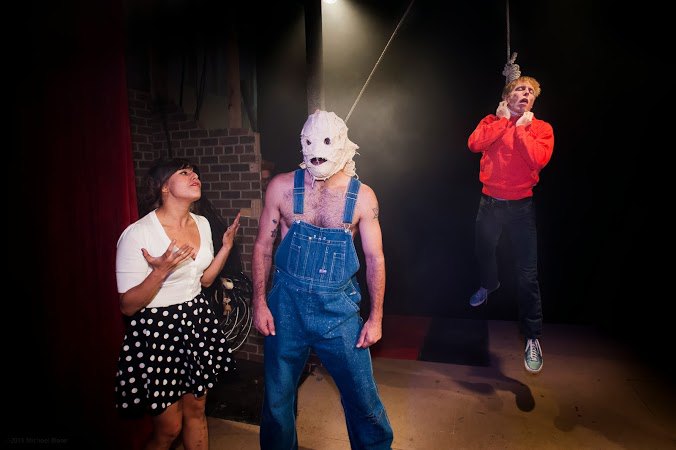
The Dead Dream Machine, playing through October 13th at La Luz (135 Thames St.), is a series of vignettes that are the “live dreams” of a girl hooked up to the dream machine. A mix of short scenes are heavy on the social commentary and are more humorous than horrifying. The campy horror show is thoroughly enjoyable, and the variety approximates the unsettling, kaleidoscopic nature of our dreams.
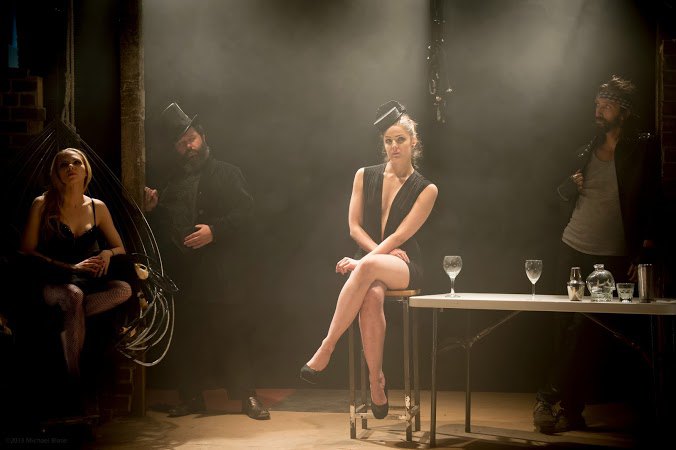
The play is also filled with theater meta-jokes, playing with the artificiality of theater. It opens with four teenagers who break into an abandoned theater to see if the local urban legend of the dream machine is true. They become creeped out by the feeling that someone is watching them—and of course they are being watched, by the audience. The conceit of the dream machine is effective at drawing a comparison between the artificial world of the stage and the dramatic, imaginative dreamworld, our own private nighttime theater.
The vignettes combine humor with the unsettling, such as the opening scene involving a scientist who is ostensibly running a brain monitoring study on a pretty college volunteer, while he is actually trying to get her to sleep with him. Each time their conversation takes a wrong turn, he zaps her brain, giving her temporary amnesia (and possible brain damage). Or the scene with an overconfident business man who negotiates his way out of death by promising to put into motion an old game he and his world-controlling friends used to play—to try to move the most amount of money to the fewest number of people.
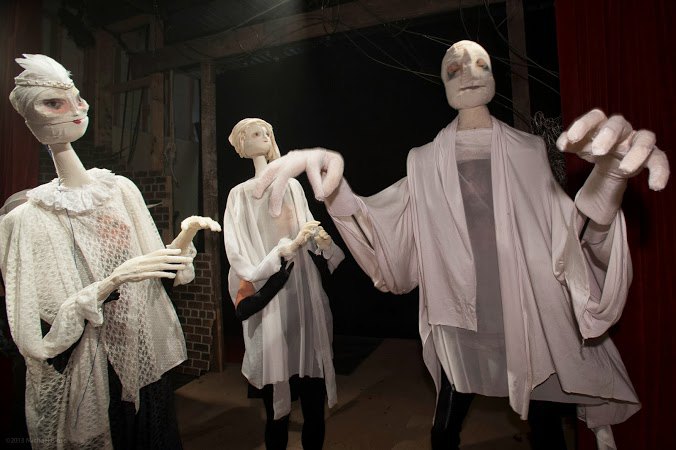
The heart of the play, and by far the most unsettling scene, is done with giant puppets worn by the actors, with elongated necks and tiny white heads. A queen, for her birthday, instructs her servants to give her the dream-stories of her people. The servants hire storytellers to entertain the masses and then harvest their dreams, embodied in red, glowing beads of light which they feed to the queen. She becomes addicted to them, demanding more and more until her subjects become completely depleted of dream-stories. Her servant attempts to comfort her with the philosophical observation that many believe that “reality is the dream of a godlike being.” The queen wants that dream too, but their machine is not powerful enough to harvest such a dream. At this, the actress bursts out of the puppet, through the curtains, and runs into the audience. She grabs audience members and screams at the top of her lungs until the lights cut out.
The scene is a miniature version of the play within the play, with the heightened artificiality of puppets rather than actors. It makes a story of our own addiction to stories— plays, novels, tv shows, anecdotes—as a culture, and the necessity of these narratives to give coherent meaning to our lives. It is also about the permeability of the boundary between the stage and our lives, about the way in which stories melt into our reality.
The vignette format allows for the play to cover a lot of ground, including the evils of big pharmaceutical companies, the string-pulling of the CIA, the world-ruling 1%, what goes wrong when teenage love mixes with urban legends, and many dance and acrobatic performances. It is quick and humorous throughout, gothically campy, well-acted, and feels as unsettling as a half-remembered dream.
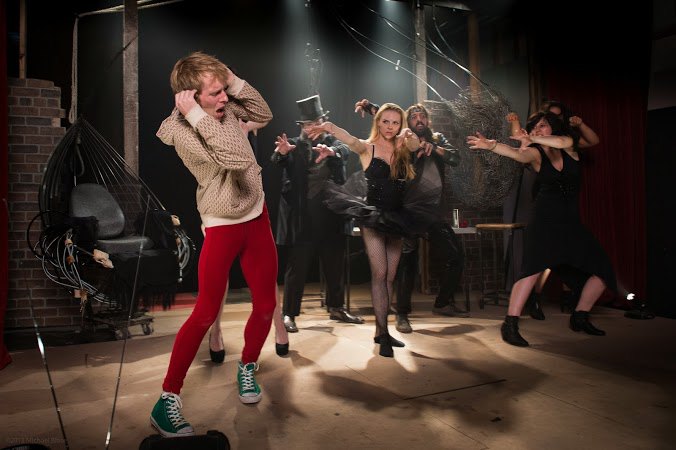
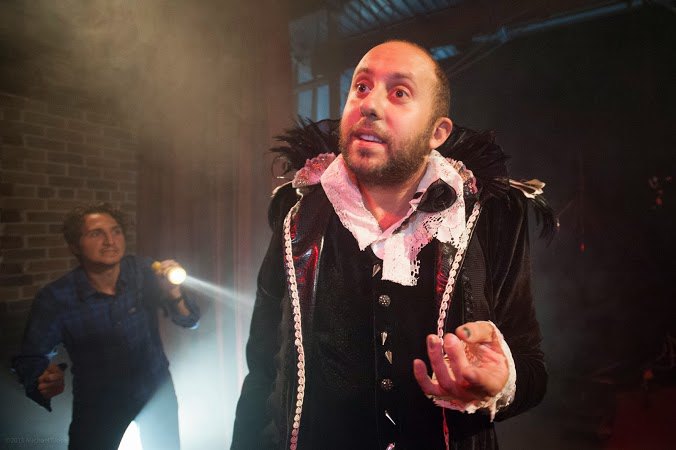
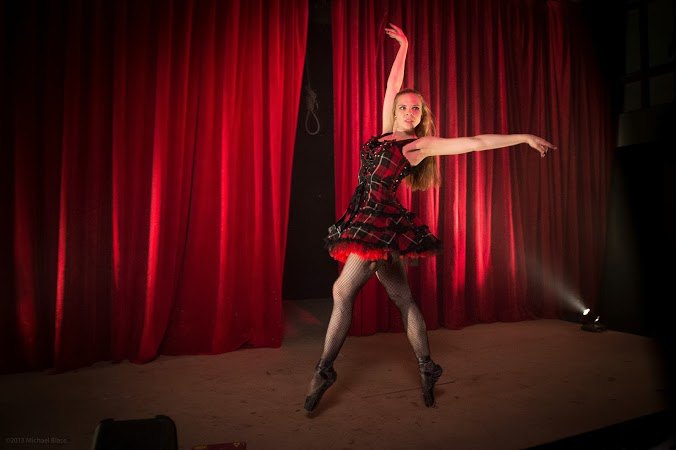

The Dead Dream Machine is written by Jake Thomas and directed and choreographed by Rachel Klein. It is playing through October 13th at La Luz, at 135 Thames St. You can buy tickets here.


